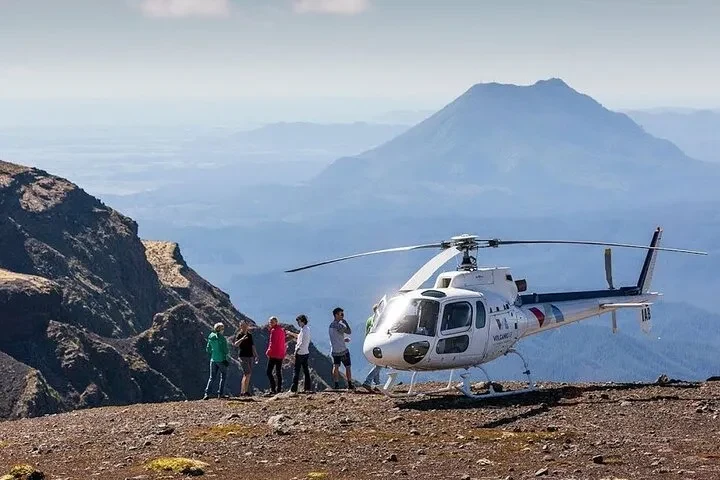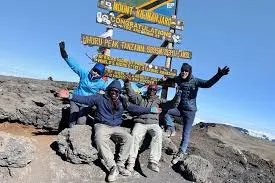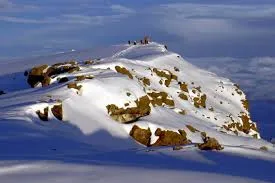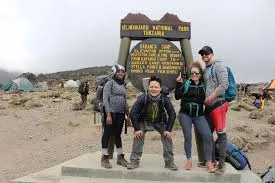Evacuation and Rescue Services on Kilimanjaro
When climbing Kilimanjaro, it’s important to be aware of evacuation and rescue procedures in case of emergencies. Guides are trained to recognize altitude sickness and other health issues, and they carry communication devices to coordinate with rescue teams if needed. Make sure your trekking group has a clear plan for rapid descent and medical evacuation, and always follow your guide’s instructions. Familiarize yourself with emergency contacts and evacuation routes before the climb. Below is a comprehensive overview of evacuation and rescue services on Kilimanjaro, designed to ensure your safety throughout a 6–9 day trek with Capable Africa Tours.
Plan Your Safe Climb Now
Why Evacuation and Rescue Services Matter on Kilimanjaro
Knowing about evacuation and rescue services on Kilimanjaro is essential for your safety. Make sure your trek operator provides clear emergency protocols, trained guides, and access to medical evacuation if needed. Familiarize yourself with the nearest rescue points, carry a communication device, and understand altitude-related risks that may require assistance. Being prepared helps you respond quickly to any situation and ensures peace of mind on the mountain. Below is a comprehensive overview of evacuation and rescue services on Kilimanjaro, designed to help you stay safe throughout your 6–9 day trek with Capable Africa Tours.
Key Features of Our Evacuation Services
- Rapid Response: Trained guides assess emergencies within minutes, initiating evacuation if needed.
- Multiple Methods: Stretcher evacuations, porter-assisted descents, and helicopter rescues up to 4,000 meters.
- Medical Equipment: Oxygen tanks, pulse oximeters, and first aid kits are carried on every trek.
- Expert Guides: Certified guides trained in wilderness first aid and high-altitude rescue protocols.
- Coordination with SAR: Seamless collaboration with Kilimanjaro SAR for efficient rescues.
How Evacuation Works on Kilimanjaro
In case of illness or injury on Kilimanjaro, evacuation procedures are designed to prioritize your safety and get you the help you need quickly. Guides and porters are trained to recognize altitude sickness and other medical emergencies and will assist in moving you to a safe location. On most routes, climbers are transported down the mountain via stretcher or supported walk, with communication to medical personnel at base camps if needed. Helicopter evacuation is available in serious emergencies, depending on location and weather conditions. Below is a detailed overview of how evacuation works on Kilimanjaro, so you know what to expect and can climb with confidence on your 6–9 day trek with Capable Africa Tours.
Evacuation Process
- Assessment: Guides evaluate symptoms using pulse oximeters and health checks (e.g., oxygen saturation below 75% or severe HACE/HAPE signs).
- Initial Response: Administer oxygen, first aid, or medications like Diamox for altitude sickness.
- Descent Decision: If symptoms persist, immediate descent to a lower altitude (1,000–2,000 meters) is initiated.
- Evacuation Method: Stretcher or porter-assisted descent for minor cases; helicopter rescue for critical cases below 4,000 meters.
- Medical Transfer: Evacuated climbers are transported to hospitals in Moshi or Arusha for further care.
Watch Kilimanjaro Rescue in Action
See how Capable Africa Tours ensures climber safety with expert evacuation and rescue services. This video showcases our rapid response, trained guides, and coordination with Kilimanjaro SAR.
Common Reasons for Evacuation on Kilimanjaro
Evacuations on Kilimanjaro usually occur due to altitude-related illnesses, severe dehydration, injuries from slips or falls, or unexpected medical conditions. Early recognition of symptoms like persistent headache, nausea, dizziness, or shortness of breath is crucial. Always climb at a steady pace, stay well-hydrated, and communicate any discomfort to your guide immediately. Proper preparation, acclimatization, and following safety protocols can significantly reduce risks. Below are common reasons climbers may require evacuation on Kilimanjaro, designed to help you stay safe throughout your 6–9 day trek with Capable Africa Tours.
Primary Evacuation Triggers
- Acute Mountain Sickness (AMS): Affects 50–75% of climbers; severe cases (HACE/HAPE) require immediate descent.
- Injuries: Sprains, fractures, or falls on rocky terrain (10–15% of evacuations).
- Hypothermia: Common on summit night due to sub-zero temperatures (0–5% of cases).
- Respiratory Issues: Exacerbated by altitude and dust in alpine zones (5–10% of cases).
- Cardiovascular Events: Rare but critical, requiring helicopter evacuation (less than 2% of cases).
Preventive Measures by Capable Africa Tours
- Daily health checks with pulse oximeters and symptom questionnaires.
- Acclimatization-focused itineraries (e.g., 8-day Lemosho Route).
- Guides trained in recognizing early signs of AMS and injuries.
- High-calorie meals and hydration to maintain energy levels.
- Emergency oxygen and Gamow bags for altitude-related issues.
Costs of Evacuation and Rescue Services
Evacuation costs depend on the method and severity of the situation. Capable Africa Tours includes basic evacuation (stretcher/porter-assisted) in our all-inclusive packages, but helicopter rescues may incur additional fees. Below is a breakdown of potential costs and what’s covered.
Cost Breakdown
| Evacuation Type | Estimated Cost | Included in Package |
|---|---|---|
| Stretcher/Porter-Assisted | $500–$1,000 | Yes |
| Helicopter Rescue | $3,000–$5,000 | No (covered by insurance) |
| Hospital Transfer | $200–$500 | No |
Insurance Recommendations
Travel insurance covering high-altitude trekking (up to 6,000 meters) is mandatory. Policies should include emergency evacuation and medical repatriation. Capable Africa Tours can recommend trusted providers like World Nomads or Global Rescue.
Safety Tips for a Secure Kilimanjaro Climb
Preparation and awareness are key to avoiding emergencies. Capable Africa Tours provides expert guidance, but climbers can take proactive steps to enhance safety. Here’s how to stay safe on Kilimanjaro.
Top Safety Tips
- Train Adequately: Build stamina with 4–5 weekly cardio sessions and practice hikes with a 5–7 kg pack.
- Monitor Health: Report symptoms like headaches or nausea to guides immediately.
- Stay Hydrated: Drink 3–4 liters of water daily to combat altitude effects.
- Use Proper Gear: Wear layered clothing, waterproof boots, and trekking poles for stability.
- Follow Guide Instructions: Adhere to pacing and rest schedules for optimal acclimatization.
Climb Kilimanjaro with Confidence
With Capable Africa Tours, your safety is our priority. Our expert evacuation and rescue services, trained guides, and comprehensive safety protocols ensure a secure climb to Uhuru Peak. Book now for a worry-free Kilimanjaro adventure!
- Rapid-response evacuation with stretcher or helicopter options
- Certified guides trained in wilderness first aid
- Daily health monitoring and emergency equipment included
- Seamless coordination with Kilimanjaro SAR
- All-inclusive packages with flexible itineraries
Limited spots for safe Kilimanjaro treks — secure your adventure today!
Plan Your Climb Now


